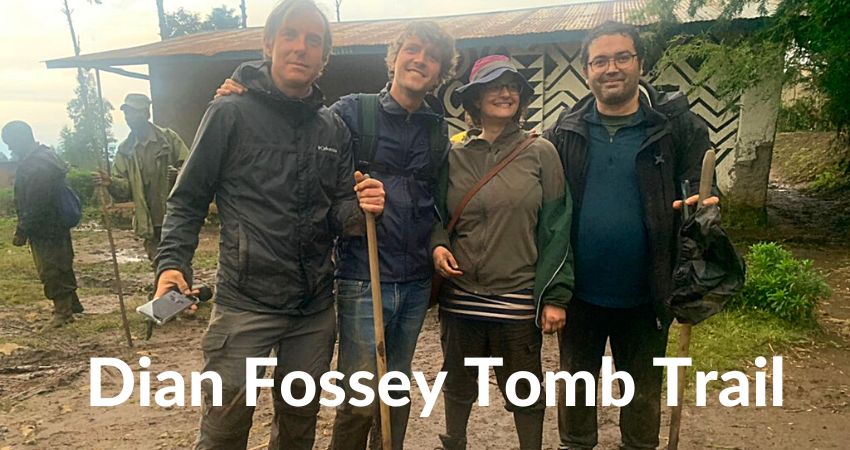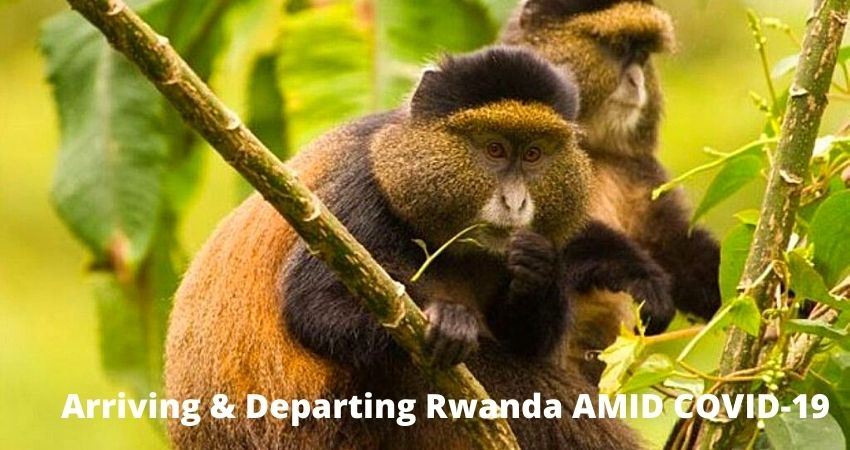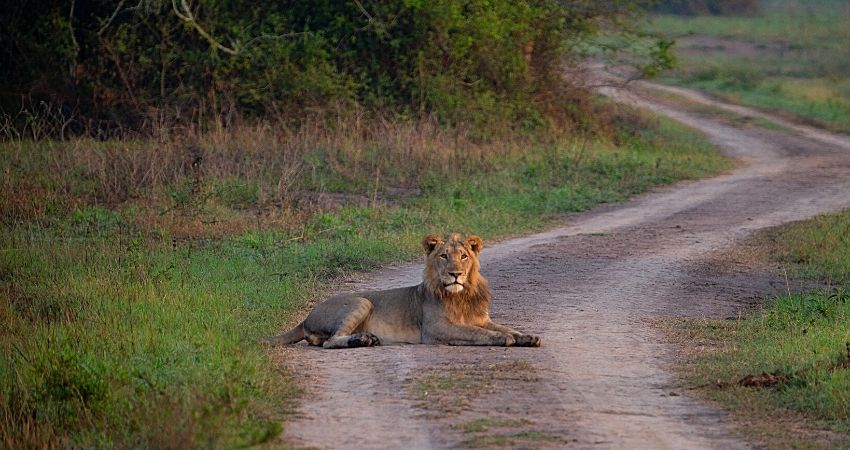
Discovering the Dian Fossey Tomb Trail in Rwanda
The Dian Fossey Tomb Trail is one of the unmissable adventures enjoyed in Volcanoes National Park and leads travelers to the final resting place of the American primatologist who sacrificed 18 years of her life to protect and study/research about the mountain gorillas, in so doing even documented their behavior thus changing people’s attitude towards these gentle creatures.
This Trail goes through the National Park while providing a learning experience on the dedication and works of Dian Fossey, a renowned Conservationist, and primatologist whose commitment is one of the reasons why Rwanda’s mountain gorillas are popular and their population was able to be protected. BOOK NOW
While exploring the Dian Fosse Tomb Trail, travelers not only have an insight into the life and journey of the dedicated primatologist who changed many people’s perception towards mountain gorillas (that were initially thought to be aggressive and savage beasts) but also her unwavering love and adoration for these Giant Apes that led her into conflict with many negative forces of conservation especially poachers hence eventually leading to her untimely death in 1985. Dian Fossey established her Research Center between the slopes of Mount Karisimbi and Mount Bisoke and named it the “Karisoke Research Camp” and even after her death, she was buried close to the Center and among her favorite Gorillas (such as “Digit”).
We always say that the Dian Fossey Tomb Trail is also a wonderful opportunity to discover the beauty of Volcanoes National Park because the Trail goes through some of the most spectacular places with exceptional plant/tree species, sightings of wildlife (sometimes even the mountain gorillas and golden monkeys), birds and magnificent views of the Virunga Volcanoes.
The actual hike through the Dian Fossey Tomb Trail
The Hike through Dian Fossey Tomb Trail begins by reporting at Kinigi Park Headquarters at 7:00 am for the briefing from the Park Ranger guides, followed by the 30-minute drive to the Mount Bisoke base. This is where the trailhead (starting point) is found and is outside the Park. Make sure to have carried a walking stick, drinking water, energy-giving snacks, a rain jacket, and a backpack, and possibly hire a porter (optional) to carry your bags and provide support through the hike.
You will start walking outside Volcanoes National Park for the next 10 minutes or so while taking in the awe-inspiring views of the Virunga Volcanoes. Not so long, you will see the Stonewall that creates a boundary between the Park and the local community thus keeping away the forest elephants from crossing over. Afterward, begin hiking Mount Bisoke, whereby if you are lucky, you might come across mountain gorillas (that are common in the area, although you won’t be allowed to take photos upon sighting them). Change direction towards the slopes of Mount Karisimbi at 2967 meters above sea level by transversing through the forested area that is characterized by Hygenia Hypericum between 2900 to 3000 meters above sea level.
On getting to an altitude of 2900-3000 meters above sea level, views of Virunga massif from DRC and Rwanda will begin to get clearer and after a short time, you will reach the Dian Fossey Tomb (the final resting place of the American Primatologist and Conservationist who studied/researched and protected mountain gorillas with her life) and that of her favorite Gorillas-Digit. In total, it takes 2-3 hours to complete the Dian Fossey Tomb Trail, although it also depends on the pace of the slowest person in the group, weather conditions (longer during the rainy season) as well as the traveler’s level of physical fitness.
What to Pack/Carry for the Dian Fossey Tomb Trail Hike.
Hiking through the Dian Fossey Tomb Trail involves walking through Volcanoes National Park hence you will need to pack a rain jacket, a sturdy pair of hiking boots, long-sleeved shirts, a breathable and comfortable safari pants of neutral color, a rainproof backpack, a good camera with extra lenses and memory space, a walking stick, gardening gloves, a reusable water bottle, a hat, an insect repellant, energy-giving snacks, to mention but a few. On the actual day of hiking, you will need to carry a walking stick and hire a porter, although the latter is optional.



